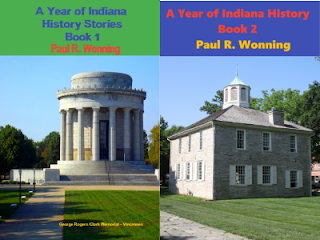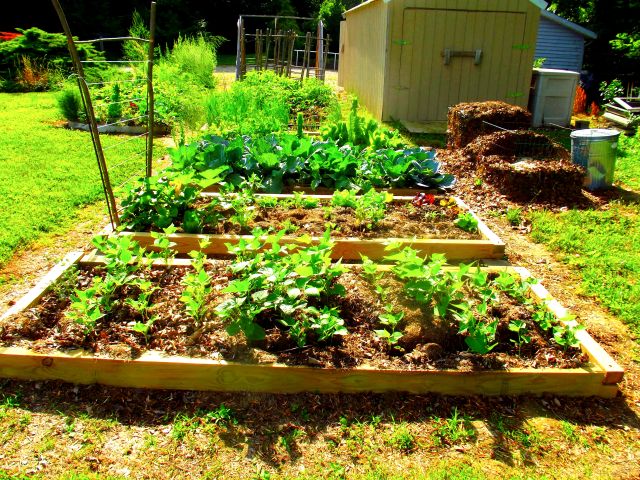Sample Chapter
A Short History of Traditional Crafts
Gunsmiths
The gunsmith performs a number of different tasks that involve many different skills, including woodworking, machinist, engineering and finishing. The first gunsmiths arose in Europe after the introduction of firearms in the Fourteenth Century. The Chinese, who had first invented gunpowder in the Ninth Century AD, were naturally the first ones to invent the firearm.
Gunpowder History
Invented by the Chinese in the Ninth Century, gunpowder at first was not explosive, but it was flammable. One of the first recorded uses as a weapon is a drawing of a flamethrower. The Chinese refined the mix, and soon they made rockets and fireworks. They used fireworks at first to scare away evil spirits. The technology spread to the Mongols, to India and then the Arabs. The technology reached Europe by the Thirteenth Century. Historians are not sure if the Mongol invaders brought the technology or if the knowledge came in through the Silk Road, but by the 1300's the Europeans had gunpowder.
Gunpowder
Classed as a "low explosive" substance, gunpowder produces a large amount of pressure and gas after a rapid burn. This explosion of gas and pressure is ideal for propelling a projectile down the barrel of a firearm or cannon, as it is not intense enough to destroy the device. Gunpowder is composed of three ingredients, potassium nitrate, carbon and sulfur. Sulfur comprises the smallest component at about ten percent. The colonies imported it from Sicily, which has huge deposits. Carbon, the next biggest component at about fifteen percent, they could manufacture from charcoal, an abundant resource made by burning wood. Potassium nitrate is the most important at seventy-five percent and is the most difficult to obtain.
Potassium Nitrate
Potassium nitrate, or salt peter, accumulates in caves as the composted remains of bat manure, or guano. The early colonists knew of no natural sources of salt peter in the New World. Sources were found later on, but the need for this critical material during the Revolutionary War forced the colonists to find foreign sources. There is another way to produce salt peter, but it is a long process. Any organic matter that contains nitrogen is a potential source for potassium nitrate. Manure, blood from slaughterhouses, and plant material of all kinds they would gather and put in a huge pile. They would water this pile from time to time with animal and human urine. This huge pile of organic matter would decompose, leaving compost behind. They would then leach the salt peter out of this compost with water. They could then re-crystallize the salt peter by evaporating the resulting liquid in the sun. This process typically took a year to produce the salt peter needed for gunpowder.
Brief History of the Firearm
The Chinese developed the fire lance sometime in the 10th Century. This was simply a tube they filled with gunpowder. They lit the gunpowder which ignited and shot a fiery bolt of sparks at an adversary. Sometimes they would put shrapnel of some kind in the tube to inflict greater damage. By the 12th Century the Chinese had evolved their craft to create the first hand cannons which shot cannonballs. The firearm was probably carried to the Middle East by Mongol invaders in the 14th Century. One of the earliest forms of firearms was a gun called an arquebus. This was a defensive weapon whose name derives from the German word Hakenbüchse, or "hook gun." The gun was mounted on hook like projection that steadied the weapon when the shooter fired the gun. Historians think that the arquebus first appeared in the Ottoman Empire sometime around 1465 and in Europe sometime around 1475. These early guns had to be fired by holding a lit match to a fire pan filled with gunpowder. This operation required a great deal of preparation at a time when the soldier was probably under attack. The development of the matchlock, possibly by the Japanese probably developed the matchlock and introduced it to the Portuguese sometime around 1543. The smooth bore muzzle loading musket appeared sometime around 1465, first as a heavier arquebus designed to penetrate armor. This led to the downfall of armor as protection and the musket evolved into a lighter firearm. The introduction of the matchlock made the musket more mobile.
Gunsmiths
The increasing complexity of firearms led to the appearance of gunsmiths that could make and repair the guns. The first gunsmiths were Italian craftsmen that assembled gun barrels. The early gunsmiths during the Middle Ages needed to join a guild in order to practice. Since there were no gunsmith guilds, these artisans joined blacksmithing guilds. As the various national governments soon began to employ gunsmiths their numbers and importance grew, leading to the appearance of specialized gunsmith guilds in the 14th Century. Britain lagged behind the other nations in gunsmiths leading King Henry VIII to invite gunsmiths in other European countries to work in London sometime before 1545. Because of the restrictive guilds in Continental Europe, many gunsmiths happily moved to England to practice their craft. Many gunsmiths migrated to America and began practicing their much needed craft among the first pioneers in the wilderness. The American gunsmiths developed the distinctive Kentucky, or Pennsylvania, long rifle which was much prized by pioneers like Daniel Boone for its accuracy. Gunsmiths provided a valuable service for the newly independent nation during the Revolutionary War. Eli Whitney's introduction of standardized gun parts in 1798 made mass produced firearms more affordable and placed less reliance upon the hand crafted guns of the gunsmith. However, many gun enthusiasts still prefer the high quality weapon produced by a skilled gunsmith.
A Short History of Traditional Crafts
Gunsmiths
The gunsmith performs a number of different tasks that involve many different skills, including woodworking, machinist, engineering and finishing. The first gunsmiths arose in Europe after the introduction of firearms in the Fourteenth Century. The Chinese, who had first invented gunpowder in the Ninth Century AD, were naturally the first ones to invent the firearm.
Gunpowder History
Invented by the Chinese in the Ninth Century, gunpowder at first was not explosive, but it was flammable. One of the first recorded uses as a weapon is a drawing of a flamethrower. The Chinese refined the mix, and soon they made rockets and fireworks. They used fireworks at first to scare away evil spirits. The technology spread to the Mongols, to India and then the Arabs. The technology reached Europe by the Thirteenth Century. Historians are not sure if the Mongol invaders brought the technology or if the knowledge came in through the Silk Road, but by the 1300's the Europeans had gunpowder.
Gunpowder
Classed as a "low explosive" substance, gunpowder produces a large amount of pressure and gas after a rapid burn. This explosion of gas and pressure is ideal for propelling a projectile down the barrel of a firearm or cannon, as it is not intense enough to destroy the device. Gunpowder is composed of three ingredients, potassium nitrate, carbon and sulfur. Sulfur comprises the smallest component at about ten percent. The colonies imported it from Sicily, which has huge deposits. Carbon, the next biggest component at about fifteen percent, they could manufacture from charcoal, an abundant resource made by burning wood. Potassium nitrate is the most important at seventy-five percent and is the most difficult to obtain.
Potassium Nitrate
Potassium nitrate, or salt peter, accumulates in caves as the composted remains of bat manure, or guano. The early colonists knew of no natural sources of salt peter in the New World. Sources were found later on, but the need for this critical material during the Revolutionary War forced the colonists to find foreign sources. There is another way to produce salt peter, but it is a long process. Any organic matter that contains nitrogen is a potential source for potassium nitrate. Manure, blood from slaughterhouses, and plant material of all kinds they would gather and put in a huge pile. They would water this pile from time to time with animal and human urine. This huge pile of organic matter would decompose, leaving compost behind. They would then leach the salt peter out of this compost with water. They could then re-crystallize the salt peter by evaporating the resulting liquid in the sun. This process typically took a year to produce the salt peter needed for gunpowder.
Brief History of the Firearm
The Chinese developed the fire lance sometime in the 10th Century. This was simply a tube they filled with gunpowder. They lit the gunpowder which ignited and shot a fiery bolt of sparks at an adversary. Sometimes they would put shrapnel of some kind in the tube to inflict greater damage. By the 12th Century the Chinese had evolved their craft to create the first hand cannons which shot cannonballs. The firearm was probably carried to the Middle East by Mongol invaders in the 14th Century. One of the earliest forms of firearms was a gun called an arquebus. This was a defensive weapon whose name derives from the German word Hakenbüchse, or "hook gun." The gun was mounted on hook like projection that steadied the weapon when the shooter fired the gun. Historians think that the arquebus first appeared in the Ottoman Empire sometime around 1465 and in Europe sometime around 1475. These early guns had to be fired by holding a lit match to a fire pan filled with gunpowder. This operation required a great deal of preparation at a time when the soldier was probably under attack. The development of the matchlock, possibly by the Japanese probably developed the matchlock and introduced it to the Portuguese sometime around 1543. The smooth bore muzzle loading musket appeared sometime around 1465, first as a heavier arquebus designed to penetrate armor. This led to the downfall of armor as protection and the musket evolved into a lighter firearm. The introduction of the matchlock made the musket more mobile.
Gunsmiths
The increasing complexity of firearms led to the appearance of gunsmiths that could make and repair the guns. The first gunsmiths were Italian craftsmen that assembled gun barrels. The early gunsmiths during the Middle Ages needed to join a guild in order to practice. Since there were no gunsmith guilds, these artisans joined blacksmithing guilds. As the various national governments soon began to employ gunsmiths their numbers and importance grew, leading to the appearance of specialized gunsmith guilds in the 14th Century. Britain lagged behind the other nations in gunsmiths leading King Henry VIII to invite gunsmiths in other European countries to work in London sometime before 1545. Because of the restrictive guilds in Continental Europe, many gunsmiths happily moved to England to practice their craft. Many gunsmiths migrated to America and began practicing their much needed craft among the first pioneers in the wilderness. The American gunsmiths developed the distinctive Kentucky, or Pennsylvania, long rifle which was much prized by pioneers like Daniel Boone for its accuracy. Gunsmiths provided a valuable service for the newly independent nation during the Revolutionary War. Eli Whitney's introduction of standardized gun parts in 1798 made mass produced firearms more affordable and placed less reliance upon the hand crafted guns of the gunsmith. However, many gun enthusiasts still prefer the high quality weapon produced by a skilled gunsmith.


































